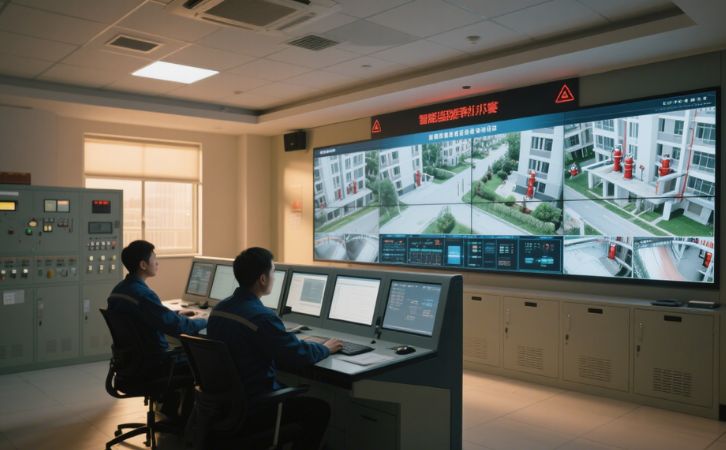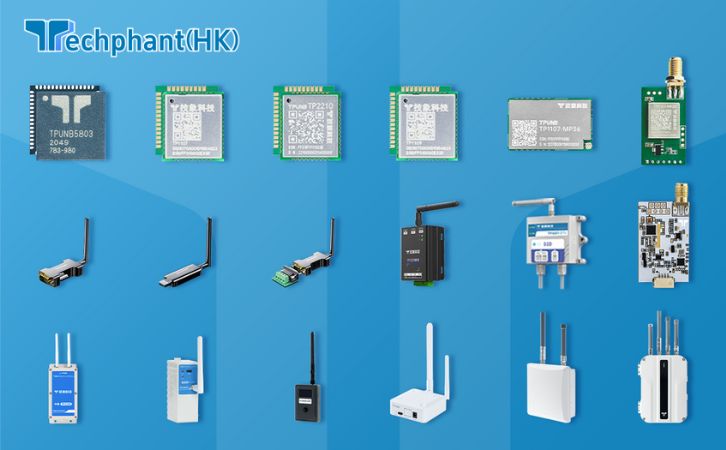Smart buildings leverage advanced technologies, particularly the Internet of Things (IoT), to enhance safety, efficiency, and occupant comfort. Among their critical applications, fire prevention and safety systems have been transformed by IoT-enabled sensors, automated response mechanisms, and intelligent data analytics. These systems integrate with building management systems (BMS) to provide real-time monitoring, early detection, and coordinated responses to fire risks, significantly reducing response times and potential damage. By combining low-power networks, smart materials, and cloud connectivity, smart building technologies are redefining fire safety standards. This article examines how these technologies enhance fire prevention and safety, exploring their technical foundations, applications, challenges, and future directions.
I. Technical Foundations of Smart Fire Safety Systems
Smart building fire safety systems rely on a network of IoT sensors, communication protocols, and intelligent processing. Sensors, such as smoke detectors (e.g., Honeywell’s Xtralis VESDA), heat sensors, and multi-gas detectors (e.g., MQ-9 for CO and CO₂), are deployed throughout buildings to monitor fire indicators. These sensors often use low-power chipsets like the Texas Instruments CC2650, consuming less than 5 µA in sleep mode, enabling battery lifespans of 5–10 years. Low-power wide-area network (LPWAN) protocols, such as LoRaWAN and NB-IoT, facilitate long-range, energy-efficient communication. LoRaWAN, operating in sub-GHz bands (e.g., 868 MHz in Europe), supports ranges up to 2–5 km in urban areas, while NB-IoT leverages LTE infrastructure for reliable indoor coverage with data rates up to 250 kbps.
Customer Premises Equipment (CPE), such as IoT gateways, aggregates sensor data and communicates with BMS or cloud platforms using protocols like MQTT (Message Queuing Telemetry Transport) or CoAP (Constrained Application Protocol). For example, a smoke sensor might publish a “fire/detected” topic via MQTT with QoS 1 for guaranteed delivery to a central server. Edge computing on gateways enables local analytics, such as correlating smoke and temperature data to reduce false alarms. Cloud platforms like AWS IoT Core or Microsoft Azure IoT integrate with emergency systems, sending alerts to fire departments or building managers. Security features, including WPA3 for Wi-Fi and TLS/DTLS for messaging protocols, ensure data integrity, though they increase computational demands on resource-constrained devices.
II. Applications in Fire Prevention and Safety
Smart building technologies enable a range of fire prevention and safety applications. In commercial buildings, IoT sensors integrated with BMS monitor fire risks in real-time. For instance, a high-rise office might deploy LoRaWAN-based smoke and heat sensors across floors, with a CPE relaying data to a BMS that triggers sprinklers, alarms, or ventilation systems. These systems can reduce detection-to-response times from minutes to seconds, as seen in deployments like Siemens’ Cerberus PRO, which integrates IoT sensors with automated fire suppression.
Smart evacuation systems enhance safety by providing dynamic guidance. IoT-enabled exit signs, connected via Zigbee or Wi-Fi, adjust lighting or display directions based on fire location, guided by real-time sensor data. For example, a smart building might use CoAP to send evacuation commands to digital signage, directing occupants away from smoke-filled areas. In residential smart buildings, systems like Nest Protect combine smoke and CO detection with mobile app alerts, integrating with smart locks to unlock doors during emergencies. Industrial facilities use smart fire safety systems to monitor hazardous areas, such as chemical storage, with NB-IoT sensors sending data to cloud platforms for predictive risk analysis. These applications demonstrate the versatility of smart technologies in enhancing fire safety across diverse building types.
III. Advantages of Smart Fire Safety Technologies
Smart fire safety systems offer significant advantages over traditional systems. Real-time monitoring is a key benefit, with IoT sensors providing continuous data streams to detect fire indicators instantly. For example, a multi-sensor detecting a 10°C temperature spike and smoke can trigger an MQTT-based alert within seconds, compared to minutes for legacy systems. Multi-sensor fusion, combining smoke, heat, and gas data, reduces false alarms by up to 30%, as algorithms distinguish between fire risks and benign events like cooking fumes.
Energy efficiency is another advantage, with LPWAN protocols like LoRaWAN enabling sensors to operate for years on a single battery, consuming less than 10 µA in sleep mode. Scalability is enhanced by protocols supporting thousands of devices per gateway, ideal for large buildings or campuses. Integration with smart building systems, such as automated sprinklers or HVAC, enhances response coordination. For instance, a BMS might shut off ventilation to prevent smoke spread while activating sprinklers. Cloud-based analytics enable predictive maintenance, identifying sensor faults, and historical data analysis improves fire prevention strategies. User-friendly interfaces, such as mobile apps or voice assistants, enhance accessibility, allowing occupants to receive alerts or control systems remotely.
IV. Challenges and Limitations
Despite their benefits, smart fire safety systems face several challenges. Sensor reliability is critical; environmental factors like dust, humidity, or extreme temperatures can degrade performance or trigger false alarms. Regular calibration and maintenance of thousands of sensors in large buildings increase operational complexity. Network reliability is another concern; LoRaWAN’s unlicensed spectrum is susceptible to interference in urban settings, while NB-IoT depends on cellular coverage, which may be inconsistent in basements or remote areas as of 2025.
Security is a significant issue, as IoT devices are vulnerable to cyberattacks. A compromised sensor or gateway could disable alarms or send false data, as seen in past IoT breaches like the 2016 Mirai botnet. Implementing robust encryption (e.g., AES-128 for LoRaWAN, DTLS for CoAP) on low-power devices increases energy consumption, potentially reducing battery life by 15–20%. Interoperability challenges arise from proprietary protocols used by different vendors, complicating integration with BMS. Standards like Matter aim to address this, but adoption remains ongoing. Finally, deployment costs, including sensors (~$20–50 each), gateways (~$500–1000), and cloud subscriptions, can be prohibitive for smaller buildings or retrofitting projects.
Conclusion
Smart building technologies, powered by IoT sensors, low-power networks, and intelligent analytics, are revolutionizing fire prevention and safety by enabling real-time monitoring, rapid response, and coordinated evacuation. Applications in commercial, residential, and industrial settings demonstrate their ability to reduce response times, minimize false alarms, and integrate with broader building systems. Advantages like energy efficiency, scalability, and predictive analytics make these systems a significant advancement over traditional fire safety solutions. However, challenges such as sensor reliability, network security, interoperability, and costs require ongoing innovation in hardware, protocols, and standards. As technologies like 5G, AI-driven analytics, and energy harvesting advance, smart fire safety systems will continue to evolve, offering more reliable, scalable, and cost-effective solutions to protect buildings and their occupants.



